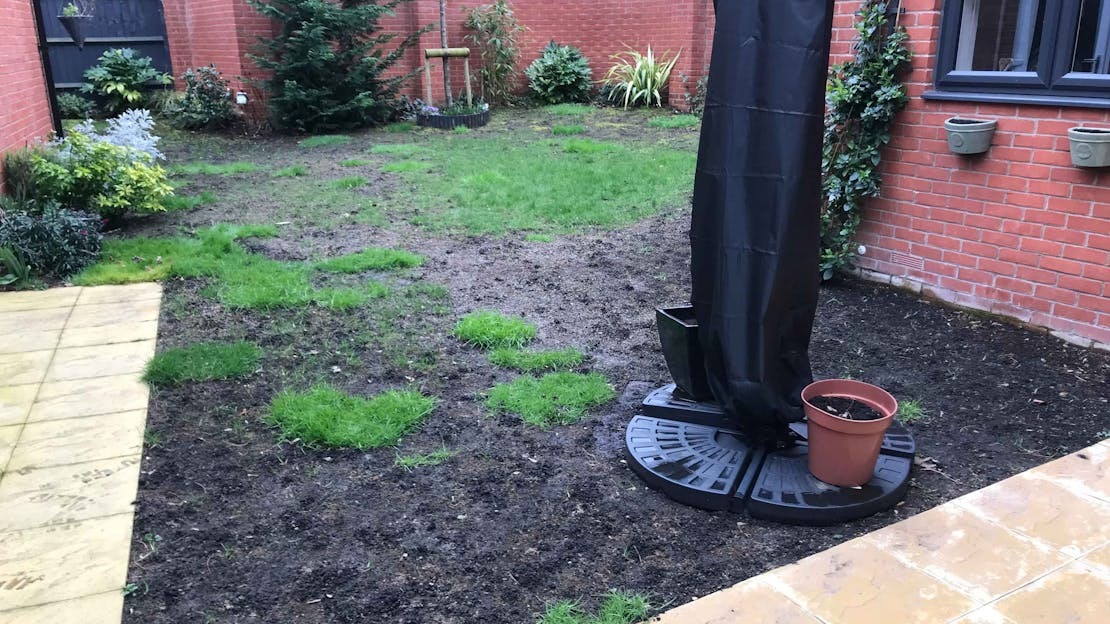
Winter Lawn Damage
During winter, several things can go wrong with your lawn, from grass thinning a little to a complete loss of grass in some areas to an invasion of moss and strange-coloured patches.
The degree to which this happens depends on many factors and would include some of the following:
- Lawn age with greater deterioration over time - 20 years is starting to be old!
- The previous summer particularly if a drought stressed your lawn
- A dull wet winter will increase thinning compared to a cold bright winter
- Snow can bring on disease particularly where any snow men stood
- Amount of thatch - the more thatch the worse your lawn would be
- Compaction – worse for older lawns or ones not aerated
- Traffic and level of use
- Shade – low light levels cause all grass to thin
- Poor air circulation increases moss and disease
- Water logging – literally drowns the plant
CAUTION: All work on the lawn should only start when temperatures rise in spring. Ideally if you start to see a little growth then things are on the move and the timing may be right. Growth in the lawn means it can repair and recover from your remedial work and seed will germinate.
Lawn Repair
If limited areas of lawn have thinned, usually in the shadier areas then these can be simply over seeded after either raking or scarifying in spring. The thinning may be an annual occurrence and you should consider over seeding in spring in shady places a normal part of lawn care. Grass doesn’t grow in woodland so it’s understandable it won’t grow in similar places in your garden.
Please refer to Moss Removal if the area also has moss
And this page and following pages for Scarifying and over seeding
Lawn Renovation
Do you consider the problem with your lawn to be a one-off (more than likely due to a combination of conditions) and the lawn is fertilised, scarified and aerated every year and less than 20 years old. If so you should be able to repair the lawn. See Spring Lawn Repairs
Alternatively do you consider this to be an unusual problem, your lawn is less than 15 years old and your lawn has not been regularly fertilised, aerated or scarified. If so follow this Spring Lawn Repairs. Then register for the Lawn Diary and start a good lawn care program which will go a long way to preventing this happening again.
If your lawn is 15-20 years old and neglected and spring lawn repairs are not successful, then the lawn is well past its best and you should consider replacing it. See Creating a New Lawn
Lawn Replacement
Lawns don’t last forever and replacing it can cost less in time, money and effort than trying to keep an old lawn with annual problems alive. It'll also be easier to keep and look a whole lot better. See Is my Lawn too Old
If the lawn is 20 years or older and progressively getting worse then seriously consider replacing it.
OR
The lawn so bad this year that replacing it would also solve other issues?
If YES to either or the content in this link sounds like a description of your lawn then definitely replace it.
Seeding Tips
It can be a little trickier to seed in shady places for a couple of reasons.
- Where there is shade from buildings, fences or conifers the area remains cooler than surrounding areas because the sun isn’t warming it up. This means you need to seed a little later in spring so the soil warms which will then enable germination.
- If the area is shady from deciduous trees try to seed slightly earlier and well before leaves come on the trees.
Preventing Further Problems
Reducing shade and preventing excess water going into the lawn should be your main focus. Therefore where possible:
- Cut back all over hanging greenery
- Can fences be lowered and shade causing items be moved
- If tree shade is a problem reduce tree height and open up the canopy if
- Prevent rain water from running off hard surfaces into the lawn
Sometimes it is impossible to change the environment that causes issues. This may mean living with the problem and therefore over seeding every spring.